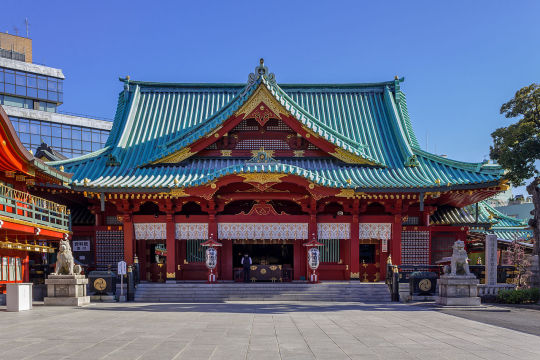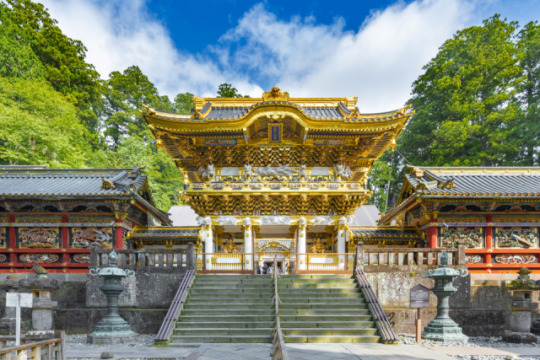#YES ANOTHER LEN'EN REFERENCE
Text
Holy Sites of the Len'en Series
This might seem very out of place for those of you who aren't the most up-to-date with the latest Len'en news, so before we go into today's topic, let's go over some background.
Kanae Tabinoki
On 14 Jan 2023, JynX made their Vtuber debut under the persona of "Kanae Tabinoki", the gamedev Vtuber.

Kanae mainly streams around 22:00 (JST) every night. On weekdays, he works on Len'en for an hour on stream, under the "surveillance" of the viewers, enabling work on Len'en to be done on weekdays as well, which he apparently hadn't been doing prior.
On Saturday and Sunday, he does approximately 2-hour long chatting and gaming streams respectively. And this is where our main point comes in.
Holy Sites of the Connecting Chains
On one such chatting streams (Summary Here), Kanae was asked if the Len'en series has any "holy sites", here referring to real-life locations highly impactful or significant to a fictional series.
Since Len'en takes so much inspiration from Japanese history and mythology, the answer was of course "yes". In fact, there are many such holy sites all across the world, not just in Japan!
However, in fear of spoiling future developments, Kanae only shared a few obvious ones with us. Nevertheless, let's take a look at some:
Taira no Fumikado — Masakado in Tokyo
The most detailed examples given were the many locations in Tokyo related to Taira no Masakado, one of Fumikado's bases and their once-target of revival.
There are many more than the one's Kanae listed on-stream, but here I'll only go over the ones he mentioned:
Masakado Mound
The "Masakado Mound" (将門塚), also simply called the "Head Mound" (首塚), is, as the name suggests, where Masakado's head is said to have been buried.
It's location is said to be where the head landed after exhausting its power while flying towards the eastern regions of Japan (long story, irrelevant today).

This place was once Shibasaki Village (芝崎村), the villagers that found the head made it a burial mound, but the village later fell under a mysterious epidemic.
A wandering Buddhist priest determined that this was a curse from Masakado's vengeful spirit. He christened Masakado with a Dharma name and erected a stone grave marker on the mound, instructing the villagers to worship him in order to pacify him.
Kanda Shrine
This next location Kanae gave was the Kanda Shrine (神田明神), which is actually related to the mound we've discussed above. In fact, the Kanda Shrine used to be found next to the mound!
The Shinto shrine (along with its previously accompanying Buddhist temple) used to be called Masakado's "body". This later got corrupted, "karada" (体 body) in Japanese got warped into "kanda", giving the shrine its modern name.
Of course, due to its close relation to the Head Mound, the Kanda Shrine also enshrines Masakado, as a god who wards off calamities. Though the shrine would later be relocated, no longer next to the mound, it would retain its enshrinement of Masakado.

Mount Narita Shinshō Temple
Finally, Kanae gave us the Mount Narita Shinshō Temple (成田山新勝寺), a Buddhist temple established in 940 to commemorate the victory of the Heian capital against Masakado.
According to the temple's origin tale, a bunch of Buddhist priests were ordered by the court to pray for their force's victory and Masakado's defeat.
Emperor Suzaku personally issued a similar decree to the priest Kanchō (寛朝), who brought with him a figure of the deity Fudō Myōō (不動明王), Acala in Sanskrit, said to have been carved by the founder of the school he belonged to.
When Masakado really was defeated, Emperor Suzaku rejoiced, thinking that Fudō Myōō himself must've heard and answered the monks' prayers.
When he later heard Kanchō's report that the statue suddenly got too heavy to bring back, he thought it was a sign that the deity wanted a temple dedicated to him built where the statue no longer moved from, and hence, the Mount Narita Shinshō Temple was founded.

Tenkai Zuifeng & Tsurubami Senri — Nikkō Tōshō-gū Shrine
Another location Kanae gave was one related to Tenkai Zuifeng and Tsurubami Senri, the Nikkō Tōshō-gū Shrine (日光東照宮).
The shrine is where Tokugawa Ieyasu, the basis for Tsurubami Senri, was buried and enshrined. Additionally, Tenkai Zuifeng makes numerous references to the shrine in their spell cards.
To learn more, check out my analyses of Tenkai and Tsurubami, if you'd like~.

??? — Kumano Grand Shrine
You remember how I said Kanae wanted to be careful with their words in order to avoid potential spoilers? Well he wasn't careful enough, oops~!
Ever considerate of his viewers, Kanae wanted to list places from all across Japan so that everyone can visit one of these holy sites without having to travel so far.
This lead to him considering the locations in Izumo (出雲), this is when he blurted out: "The Kumano Grand Shrine?" He quickly realises that he didn't tell the story related to the shrine yet, and asks the viewers to forget about hearing that bit.
Even so, I'll have to apologize to JynX/Kanae here, because I'm definitely digging into this. So, let's see what the shrine is about~!
Kumano Grand Shrine, First Shrine of the Izumo Province
While I wasn't originally sure whether he was referring to modern-day Izumo City (出雲市) or the historical Izumo Province (出雲国), the mention of the shrine confirms it to be the province.
This is because Kumano Grand Shrine used to hold the rank of First Shrine in the Izumo Province (it still holds onto the title in an unofficial capacity), "First Shrine" being the highest ranking shrine in a province back then.
Below: The gate to the shrine, an impressive shimenawa rope hanging from it.

The shrine is said to be where fire was first discovered, and is thus also called "Hinomoto-Hidezome no Yashiro" (日本火出初之社 shrine of the first appearance of fire in the land of the rising sun).
I would love to learn more, but the tale behind this name has already been lost to time, and any theory I make based on this little bit would simply be too vague and unsubstantiated.
Looking at the shrine's history doesn't do us much good either, it's just one of those shrines that is so old it's seemingly been there since the dawn of time (or at least, the written record).
Our first record of the shrine comes from the Nihon Shoki, Japan's second-oldest chronicle of its own history, where the gods themselves are said to have ordered the creation of this shrine. Nothing else is known about its origins, a dead end again.
God of the Kumano Grand Shrine
Finally, we can look at the one lead we do have, the gods of the Kumano Grand Shrine, or rather, the god of the shrine.
Below: The prayer hall of the shrine (right), behind which you can barely see the main hall, where the god's spirit is said to dwell.

Curiously, the shrine enshrines but a single god, his name?
Izanagi-no-Himanago Kaburoki-Kumano-no-Ōokami Kushimikenu-no-Mikoto
伊邪那伎日真名子 加夫呂伎熊野大神 櫛御気野命
Yeaaaah... That's a long name, like really long. In fact, it's the longest deity name I think I've ever encountered in researching Japanese mythology (just by a single character but hey).
Still, the name can be broken down:
Izanagi-no-Himanago (伊邪那伎日真名子): "August and beloved child of Izanagi"
Kaburoki-Kumano-no-Ōokami (加夫呂伎熊野大神): "Divine ancestor god, the Great god of Kumano"
Kushimikenu-no-Mikoto (櫛御気野命): Another name for the god Susanoo-no-Mikoto
"Kushimikenu" (櫛御気野) is not too clear, although scholars propose that "kushi" (櫛) means "wondrous" and "mike" (御気) means "food", thus the name is understood here to denote a food god.
And so, the name can be interpreted to be:
"The august and beloved child of Izanagi, divine ancestor god, the great god of Kumano, Kushimikenu"
Yep, that's a name.
I'll be honest we didn't really need to delve into the name so much, but it's one of my favourite parts of Japanese mythology so I couldn't help myself, ehe~.
What Could This Mean?
Now that we have one clear lead, the Shinto god Susanoo, here's a few possibilities of what this shrine could potentially inspire/lend itself to in Len'en.
Possibility 1: Revelation of the Adagumo's Downfall
Susanoo is the god who, most famously, slew Yamata no Orochi, the serpentine monster who served as the inspiration behind Adagumo no Yaorochi, Saragimaru and the clan leader they spawned from.
So one possible way to interpret this little leak, is that we might get to learn about the people who caused the downfall of the ancient Adagumo clan from all the way back then.
That, or we may get to learn more about how the Adagumo siblings, the orochi youkai, fell throughout the ages.
Possibility 2: Conflicts with and amongst the gods
Another key story about Susanoo, is his banishment from the heavenly realm of Takamagahara.
I won't recount the story here, but most notable to me personally, in the relation of the Len'en series, is that Susanoo traces his lineage back to the heavenly gods.
However, after his banishment, he never went back to Takamagara even after patching things up with them, nor did he go to rule the domain originally granted to him, the sea. Instead, he chose to go to Ne-no-Katasukuni (根の国), the "land of roots".
The nature of Ne-no-Katasukuni is not well understood. It's commonly thought of as an underground realm, perhaps related to the realm of the dead, Yomi.
However, other scholars and even traditional prayers contradict this, proposing that it's a location on the surface of the world, or a mystical location across the "great plains of the sea".
Nevertheless, Susanoo's banishment from Takamagahara and subsequent move to Ne-no-Katatsukuni means that he has transformed from a heavenly god, to an earthly god.
This of course ties into a curious line uttered by Hoojiro in AWTIF:
AWTIF [Baclside] - Alice Leaping Atop Lily Pad Ice
Hoojiro "Have you ever heard of it? The story of the imperial family and the Earthly Gods buried by history's darkness."
I have a more detailed analysis and theory on it here, so go check that out if you want more context.
If a Susanoo figure really is going to show up in Len'en, perhaps we'd get to learn about Len'en's own version of events from them. What dark secrets do the heavenly and earthly gods hide, and what has been lost to the flow of time? Maybe it's time to find out~.
And that's concludes that. We covered a lot this time, none of them too detailed, since they don't really directly impact Len'en's lore, but interesting stuff nonetheless.
And most curiously, we went over two possible directions the story is taking us in, all thanks to an unfortunate slip of the mouth. It's alright Kanae, nothing was spoiled and the intrigue is greater than ever~!
As a side note, there's actually a surprising amount to analyse in regards to Kanae's himself (as a character I mean, design and such, I'm not about to analyse him as a human being), so if you're ever interested in that, it'd be an interesting dive too.
Well then, that's all I have. I hope you enjoyed~! :)
20 notes
·
View notes